by Kristen Minogue
The last Western Black Rhino appeared in Cameroon in 2000. Now they’re gone, according to the International Union for Conservation of Nature, which declared the rare subspecies officially extinct Nov. 10. As thousands more species go extinct across the world every year, the Chesapeake Bay watershed is fighting to save its own endangered flora and fauna. Maryland counts 362 plants and animals on its endangered list – and that’s not including the ones that have already been wiped out from the state. Whales, bats, turtles and orchids: here are six of Chesapeake’s most wanted.
Dwarf Wedge Mussel (Maryland: Endangered; U.S. Endangered)
If these bivalves went extinct, the Bay would sorely miss them. Besides purifying the water from bacteria, harmful algae and metals, their shells also provide habitat for many of the Bay’s smaller creatures. Unfortunately freshwater mussels are one of the most endangered taxa in the world. They’ve faced threats since the 1800s, when their shells were popular for pearl buttons. Now threats are more indirect: Nutrient pollution from the land and subsequent low-oxygen zones can destroy their habitats and suffocate them.
Indiana Bat (Maryland: Endangered; U.S. Endangered)
Bats: The cave-dwelling, nocturnal creatures of nightmare. Insects would probably love it if they went extinct, as a single bat can eat up to 3,000 bugs a night. Humans, not so much. Those of us who like eating food grown in the U.S. can thank bats for getting rid of some of the worst crop pests. Though roughly half hibernate in southern Indiana caves (hence the name), populations are scattered throughout most of the eastern U.S. Habitat destruction is one of the biggest threats to their survival. But in the last few years a new killer has emerged: white-nose syndrome, a disease from a white fungus that covers their muzzles as they sleep. The disease has already claimed more than a million bats. They also need wooded streamside forests for roosting – another landscape feature that’s disappearing.
Small-whorled Pogonia (Maryland: Extinct; U.S. Threatened)
This tiny plant is considered the rarest orchid east of the Mississippi. Already extinct in Maryland, it now occurs in only 18 states and provinces and is critically imperiled in 14 of them. Much of the problem lies in the soil. Like many orchids, the small-whorled pogonia needs a few, very specific microscopic fungi to grow. The fungi in turn need certain kinds of trees. When forests are logged or disturbed, the trees change, and this throws the tree-fungus-orchid cycle out of whack. By studying one of the few populations in Virginia, SERC scientists are trying to figure out exactly which fungi the pogonia needs to survive. Once they narrow that down, they hope to be able to grow one in lab and one day bring the orchid back to Maryland.
Watch: Resurrecting the small-whorled pogonia
North Atlantic Right Whale (Maryland: Endangered, U.S. Endangered)
Unlike many whales, right whales prefer to hug the coastlines – a fact which makes them more vulnerable to human disturbance. In the past excessive whaling caused their populations to plummet until today there are only 300 to 400 left in the western North Atlantic. Now they’re more often killed while accidentally entangled in nets or in collisions with ships. November marks the beginning of their winter migration, a dangerous time when they migrate south to give birth to their calves. During the migration some pass by the mouth of Chesapeake Bay. To help protect the whales on their journey, NOAA’s National Marine Fisheries Service created mandatory speed limits for large ships in certain areas, including the entrance to the Chesapeake.
Leatherback Sea Turtle (Maryland: Endangered; U.S. Endangered)
The world’s largest turtle – and largest living reptile – stretches 6.5 feet long and can weigh as much as a small car. It’s also the only sea turtle without a hard shell. Though leatherbacks generally stick to the open ocean, they rely on beaches to make nests for their eggs, and some have been found in the lower Bay. Today both land and sea have become dangerous. On shore the eggs, juveniles and adults risk being harvested. At sea they can often find themselves inadvertently trapped in fishing gear.
Puritan Tiger Beetle (Maryland: Endangered; U.S. Threatened)
Only 5,000 of these insects are left in the world, and 4500 are in Maryland, according to the state’s Department of Natural Resources. Their tiger-like predator instincts make them wonderful at pest control. But they have very specific living requirements. Their larvae can only survive in barren, gradually eroding cliffs that erode just enough to keep away plant life but not enough to harm the population. In 2006 the Maryland DNR began restoring a cliff near Sassafras River for them by keeping plants away with herbicides, with some success. They’ve also tried relocating the beetles, though so far this hasn’t led to any established populations.
View full List of Maryland’s threatened and endangered plants and animals

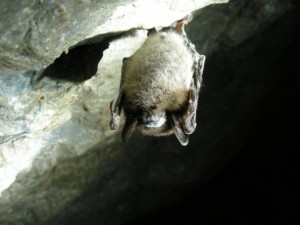
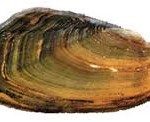
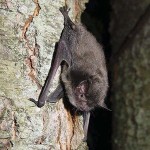
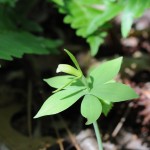
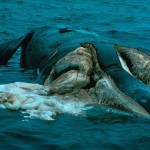
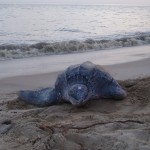
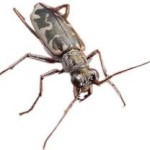

It is so sad that such fascinating species are endangered. The bat surprises me the most as I wouldn’t think they would be at as much risk as the whales and turtles in the sea.
Keep up the good work.
It is such a pity that all these lovely species are endangered. As Jeff has mentioned even I am surprised that the bat is endangered as well. If people don’t stop hunting on animals most of the species will become extinct and we will able to see them only in pictures. Another animal which is endangered is the Tiger. I hope people will start protecting the Nature and animals as well.
soo sad for the animals people should know better
poor animals
:(
What the heck is wrong with people
It’s a shame that so many species that are an integral part to only the health of the Chesapeake ecosystem, but our own health, are being wiped out. It surprises me how great of an impact humans have on so many other species, and the apathy many big businesses and individuals have toward the health of the organisms and habitat that provides them with food and a home. I really hope more will get done soon to keep these animals alive. Thank you to everyone who is helping keep these species alive.
It sucks that this is happenening to so many species. For my freshman paper at my school, I’m going to write about one of these species. I think I’m going to do either the bat or the turtles to try to help them.
The bat is endangered because people thought bats had rabies so they created a pesticide to kill them but in the last 40 years, only 20 people have caught rabies in both the U.S. and Canada combined, The people picked up injured bats without any gloves. It’s so sad that the bats were killed because of something humans thought, but wasn’t true. They are still recovering now.